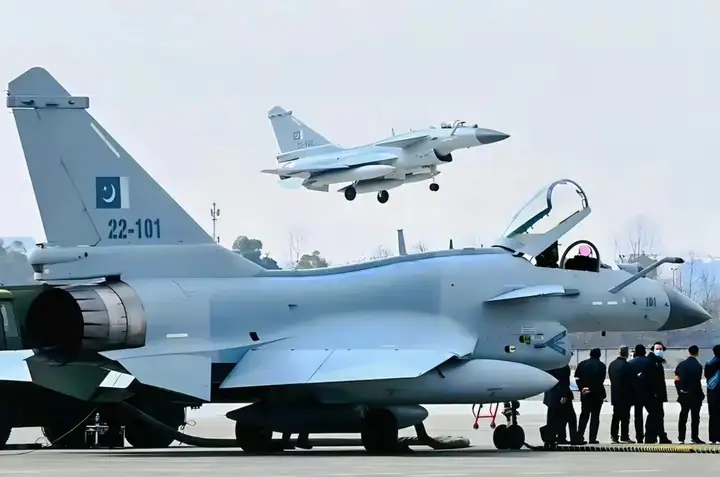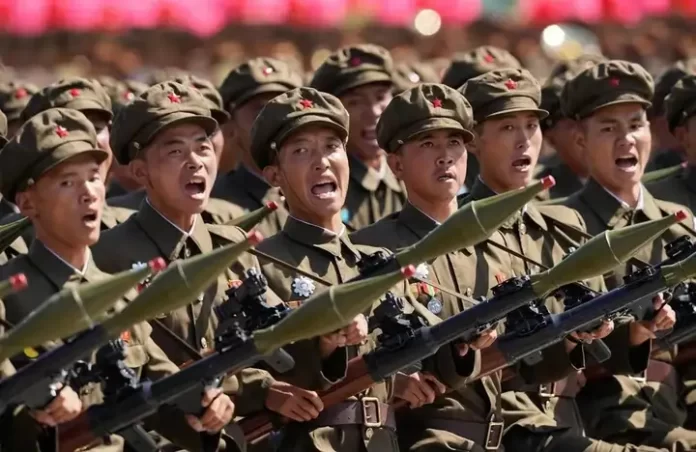China would rather help “not-so-close” Pakistan, so why didn’t it choose to help North Korea enhance its military capabilities?
For China, both North Korea and Pakistan are strategic partners, but China’s attitude towards military cooperation with the two countries differs greatly.
China has provided Pakistan with a series of advanced weapons such as the J-10CE fighter, JF-17 Thunder fighter, Type 054AP frigate, etc. However, it has almost never provided weapons technology to North Korea. Why is this?
Funding Issues for North Korea
Actually, it’s not that China is unwilling to provide, but because North Korea lacks the necessary funds.
Due to years of isolation from the mainstream world system, North Korea’s economic level is among the lowest internationally, with its GDP estimated to be only about one percent of South Korea’s.
In this situation, unless China provides weapons technology to North Korea free of charge, North Korea simply cannot afford advanced weapons and equipment with its economic strength.

Taking the example of weapons exported by China to Pakistan, Pakistan’s purchase of 24 J-10CE fighters cost approximately $2 billion, including 12 WS-10B turbofan engines for replacement and maintenance, as well as 288 PL-15E air-to-air missiles, which is the full-status version of the J-10CE.
So, on average, the price of each J-10CE fighter is close to $83 million, a price that North Korea cannot afford.
Some may say, since North Korea is China’s partner, why doesn’t China provide weapons to North Korea for free?
If we look back before the 1970s, China did indeed have examples of providing weapons to other countries for free, but times have changed. China must consider economic benefits in military trade; otherwise, it would be difficult to support its huge military-industrial complex.
If a precedent for giving away weapons is set, China’s future military trade with other countries may be affected.
Even if China is willing to provide weapons to North Korea for free, it also needs to consider the international community’s influence.
Due to North Korea’s nuclear testing over the years, the United Nations currently imposes weapons embargoes and a series of strict sanctions on North Korea, and China has not voted against relevant resolutions.
Therefore, China must comply with the relevant resolutions of the United Nations and cannot arbitrarily provide weapons technology to North Korea.
North Korea’s Inability to Maintain Sea and Air Power
It is often said, “Ten years to build an army, fifty years to build an air force, a hundred years to build a navy,” which shows that building naval and air forces takes much longer and costs more than building armies, as the technical content of navies and air forces far exceeds that of armies.
Therefore, countries with strong naval and air forces generally have relatively good economic strength. Even China’s rise in naval and air forces is based on becoming prosperous through reform and opening up.
But for North Korea, even if China provides it with advanced naval and air equipment, with its economic and technological foundation, it probably cannot utilize the value of this equipment.
For example, the last update of North Korea’s air force was the introduction of Soviet MiG-29s in the 1980s, which is more than 40 years ago.
This means that North Korea’s air force maintenance system has stagnated for over 40 years, and they simply do not have the technical capability to maintain advanced fighters.
In addition to maintenance issues, training North Korean pilots is also a challenging problem.
North Korea’s mainstream fighters are still MiG-23s and MiG-21s from the 1960s and 1970s, lacking advanced radar and avionics systems, with almost zero digital and informational levels.
In this situation, even if North Korea’s air force gets advanced fourth-generation fighters, it will require lengthy training to become combat-ready.
As for building a navy, it is even more difficult than building an air force.
The cost of naval equipment is much higher than that of air force equipment, and each warship is equipped with complex departments and combat systems, requiring high-quality officers and crew members to work closely together. Yet North Korea’s naval foundation is even weaker than its air force’s, currently only qualifying as a small coastal defense navy.
In a situation where both funds and technological foundations are lacking, the development of North Korea’s navy can only be a castle in the air.
Balancing the Situation on the Peninsula
In fact, on the issue of the Korean Peninsula, China does not entirely endorse some of North Korea’s decisions, which can be seen from China’s opposition to North Korea’s development of nuclear weapons.
China’s policy towards the Korean Peninsula has always been very clear, that is, to maintain the strategic balance on the peninsula, ensuring that the United States and South Korea cannot threaten North Korea’s existence, but China will not support North Korea’s use of force against South Korea.
The reason China does this is closely related to the Korean War over 70 years ago.
It has to be said that although the Korean War was a great victory for China, China also paid a high price for this victory, including the casualties of hundreds of thousands of volunteers, and also missed the best opportunity to completely solve the Taiwan issue.
Therefore, for China, it’s better not to have the same war erupt on the Korean Peninsula again.
If China were to provide North Korea with a large number of advanced weapons, it would inevitably stimulate South Korea, causing it to become more actively involved in the American camp.
Since the establishment of diplomatic relations between China and South Korea in the 1990s, the originally tense situation on the Korean Peninsula has shown signs of easing. This is the most desirable development for China—once South Korea feels secure enough, then the U.S. forces stationed in South Korea would lose their reason to continue staying in South Korea.
However, the situation is different when it comes to Pakistan.
The reason China provides a large number of advanced weapons to Pakistan, which seems a bit “less close” compared to North Korea, is largely because China hopes to divert India’s attention through Pakistan’s strength.
For India, if it were to engage in conflicts with both China and Pakistan simultaneously, its chances of winning would be close to zero. In this way, it would not dare to act recklessly, and China’s southwestern border would have precious peace.
